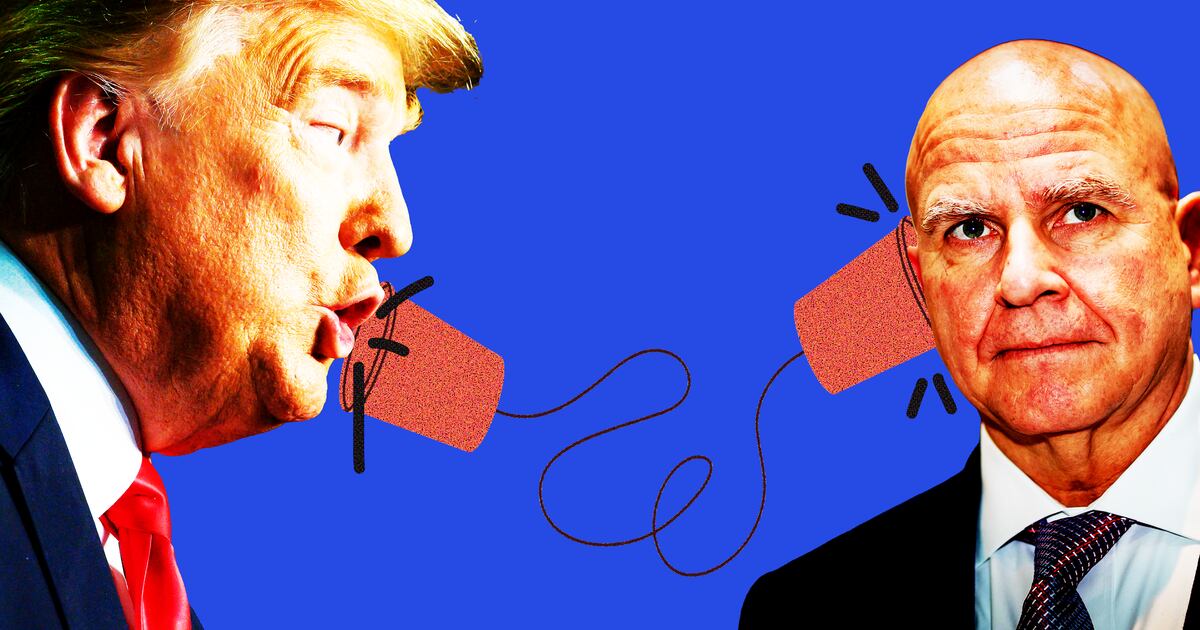
Co-founders of the elevated railway-cum-park known as the High Line, Joshua David and Robert Hammond have forever changed the face of Manhattan—and inspired a new wave of community-based, urban renewal projects from Chicago to Rotterdam. Heralded by The New York Times architecture critic, Nicolai Ouroussoff, as “One of the most thoughtful, sensitively designed public spaces built in New York in years,” this floating landscape has unleashed the city’s biggest display of public affection in recent memory. The Daily Beast caught up with David and Hammond shortly after the first portion of the park opened in June.
Click Image to View Our Gallery of the High Line

Matthew Dakotah: You both started this journey at the now-famous community meeting where you met a decade ago. What went through your minds when you walked through the completed space? Robert Hammond: Someone asked me, “Is this how we imagined people using it?” and I realized I never really thought about it. We thought about the design and how people would use the chairs, but I didn’t really think about seeing people’s faces, people really experiencing the park. That’s what’s been most moving to me is the sea of smiling faces. I also noticed all of these people holding hands and realized I rarely see that in New York. It’s part of the pace. It slows people down. They are actually strolling—something you don’t normally do in New York. You really got a sense of the way people bring a space to life–that people are the heart of the park itself.
• Matthew Dakotah: Branson Blasts OffIn fact, last year you told The New York Times that one of your “biggest concerns” was “over-success”…that the park would be “loved to death in the first few weeks.” So are people loving it gently? RH: People already feel a sense of ownership. I was worried they’d be walking in the plants and picking all the flowers. But they’re being very respectful—appreciating it and realizing that they need to take care of it. And even though we’ve had thousands of people up there already, the plants look great—even the edges that I thought would get a little trampled. We don’t have any barrier between the path and the plantings. People always think that the public will degenerate to the lowest common denominator, but they don’t. And that’s why they can have movable chairs at Bryant Park.
I have to say that going up there and seeing people use it is hands down even better than all the reviews. There are a lot of public spaces that get great design reviews but the real test is whether it’s going to be a real park for New Yorkers. I’m from San Antonio and people say, “Do you want it to be like the Riverwalk?” And I always say no, because the Riverwalk is interesting but it’s mainly just tourists.
So what about the extension plans? JD: We just signed the construction contract for section two—to West 30th street—which will open next year. As for section three, we’re hoping the city will provide a clear timetable and road map for how they are going to preserve it before they finish the rezoning for the Rail Yards site. We want a consistent look and feel for the High Line all the way from Gansevoort to 34th Street where it hits the Javitz Center.
Chelsea property owners were skeptical in the beginning. What are they saying now? RH: They’re big supporters now. But they looked at Josh and I early on, and to their credit saw that we didn’t have any money, that we didn’t have a plan to get the money, we didn’t really have any experience.
Was the turning point when Mayor Bloomberg started to publicly support the effort? RH: That was huge. But the City Council were the first ones to give us public funding and they were helping us fight [Mayor] Rudy Giuliani. Congressman Jerry Nadler was incredibly helpful and when the Bloomberg administration came into office, there was a sea change.
Did the two of you have any sense of what you were signing up for at the outset? JD: Absolutely not. The last 10 years of my life have been wonderful and I wouldn’t trade them for anything, but I might not have done this had I known what I was getting myself into. The thing that I found most upsetting when we came into the picture was the assumption that the High Line was going to be torn down. So in the beginning it was about let’s bring the community and the city together and actually have a process where we’ve evaluated it.
There had to have been moments of doubt along the way, too. RH: I’m definitely a dreamer but also a realist. I thought the chances of this happening were one in a hundred for the first several years. But the High Line has always attracted interesting people and I did the personal calculus and to me it was worthwhile even if it wasn’t going to happen.
“There are a lot of public spaces that get great design reviews, but the real test is whether it’s going to be a real park for New Yorkers.”
So how has the High Line changed your lives and perspectives? JD: My life has changed very dramatically. I used to be a freelance magazine writer. I worked at home. This is a community-based project and to me it demonstrates the level to which people are willing to invest in their neighborhoods.
What stood out about the winning design proposal submitted by James Corner and Diller Scofidio + Renfro? RH: It wasn’t their design, it was them. They were very honest about wrestling with some of the essential problems. Someone told me, “Don’t pick a design team based on personality or people you like, that’s a mistake.” I’m fortunate to have ignored that advice. And it’s interesting: The original concept they submitted for the design competition is so similar to what was actually built that it’s fun to go back and look at that.
JD: They understood the appeal of a forbidden landscape. The way we visited the High Line before it was opened to the public was surreptitious, and you had to find secret ways of getting to it. In one of their presentations they used the word “illicit,” and that was my version of “you had me at hello”. They had me at illicit. I’ve really come to love the 14th Street stair because it has that same sense of mystery. It captures the essence of what it used to feel like to go into that hidden park.
And what were the other primary challenges? JD: It’s just 30 feet wide in many locations, so how do you create a path that’s wide enough to accommodate the public and still leave room for generous plantings? And how do you take something that’s really steeped in the history of the West Side and translate that into a present landscape and one that also looks toward the future—so that it’s not a piece of historical nostalgia but something that really marks yet another stage of the structure’s life?
How did sustainability inform the design approach? RH: One of the most important things to avoid in a green project is tearing down existing buildings. I hope this will inspire other people to look at old industrial buildings as an opportunity to incorporate history into new public spaces. In terms of the design, the majority of the plants are native—a lot of them were already growing up there and they use very little water.
JD: Yeah. A landscape might look “green” because it looks physically green but when you use annuals and you’re constantly having to replace plants, it’s not really a sustainable practice. Whereas this is almost all perennial grasses, plants, trees. Every year and every season it’s going to look different. And over the years, plantings will mature.
Did any concessions have to be made from concept to execution due to cost or other constraints? RH: The one thing that got lost was a glass-bottom swimming pool over 14th Street that was just too expensive.
And now Friends of the High Line is responsible for the maintenance of the park? RH: Exactly. We’re responsible for hiring and paying all the gardeners and all the maintenance people. And this huge success of all these people enjoying the park means it’s more expensive because you have to clean the bathroom more and empty the trash more, so it’s a good problem to have but it makes the fundraising that much more important.
How do you envision the space evolving over time? JD: The difference between landscape and architecture is that buildings don’t generally change, whereas landscapes are meant to change. Some things aren’t going to work—every year and every season, it’s going to look different. Piet Oudolf, the planting designer, said it’s going to take about two years for it to fully grow into what he had envisioned originally. We hired a guy called Patrick Cullina, who was at the Brooklyn Botanic Garden, to run the horticulture and operations of the park. And one of the reasons I felt so excited about getting him to come work with us was he had a real vision of this being a changing landscape, it’s not static, it’s not trapped in time.
Seeing it that first time after you’d been envisioning it for so many years must have been emotional. RH: Almost every day I’ve had times when the tears just start coming. I was just up there having lunch on the sundeck when a group of maintenance workers from Google came up. Someone told them I worked on the project and they were so excited. They left their famous Google cafeteria to have lunch up there. And then Edward Norton came strolling by and they got their picture with him—it was great. There’s been so much great new architecture that’s come into New York, but a lot of it is fancy apartment and office buildings. This is a piece of architecture and design that is free for everyone to enjoy.
Does the design include other environmentally friendly features? RH: The planking system drains into the plantings so only about 20 percent of the rainwater will go into the sewer system. Then there are things like the LED lights—they’re more expensive up front but they should last 10 years and they use about a tenth of the power.
I know it’s early, but is there a general target date for the completion of section three? JD: We just have no idea. Now that section one is open, people are seeing with their own eyes how incredible it is. The idea of having something happen to the High Line at the Rail Yards besides full preservation becomes much harder when you see the beauty of this park. (Joshua has to leave for a meeting.)
And it does seem the High Line may become a new paradigm for urban renewal. RH: I’ve seen that it’s already starting to happen and not just elevated railroads. One of our volunteers—a guy named Scott Lauer—went on to start Open House New York. And then two guys that I’ve been meeting with started a group called the The Hudson River Powerhouse, and they’re trying to save the IRT Generating Plant on 59th Street that McKim Mead & White designed. There’s also a friend of mine from college who is trying to build a New Globe Theater on New York Harbor. These aren’t the kind of people—like rich Upper East Siders—who normally start these projects. They’re just regular people with their own jobs and their own lives trying to make these dreams that most people think are impossible, happen.
All right, last question and I wish Josh were here to answer this with you, but after a decade of working on this historic project together, are you still a happy couple? RH: (Laughter.) I said last night at our benefit—and all of my ex-boyfriends were there—that Josh has been my longest relationship. And he has a boyfriend and I think they’ve been together for 26 years, but a lot of people think that we’re a couple because we often call each other “partners”. But our friendship is one of the things I’m proudest of—that we’ve been able to do this together for these 10 years.
Become a friend of the High Line and you’ll get exclusive discounts and help support the continued operation of the park.
Matthew Dakotah, who is conducting a series of interviews with global environmental leaders for The Daily Beast, is an award-winning journalist who has directed 14 magazine and Web site redesigns and worked at Hearst and Emap. As vice president, group editorial director of Homes & Lifestyles Publishing, he initiated ongoing coverage of sustainable development and secured contributors from The New York Times, The Washington Post, Architectural Digest and Princeton. Follow Matthew on Twitter: @matthewdakotah.




